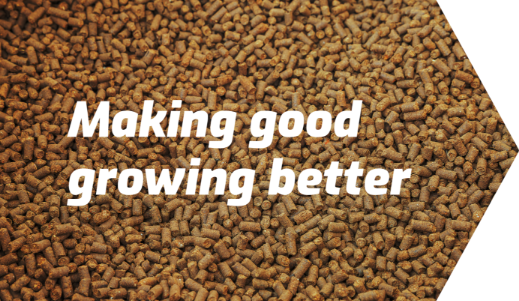
Transitioning to Regenerative Organic Agriculture
How to Make the Switch Easier and Faster
- Posted: May 26, 2022
- Author: Nature Safe
- Crop
We’ve talked about the benefits and the practices of regenerative organic agriculture, but making the transition from conventional farming may seem incredibly intimidating. Between the certifications required, the time and money needed, it is indeed a challenging task. But it doesn’t have to be overwhelming, and nor should it need to happen overnight.
What does a Regenerative Organic Certification Mean?
Most neighborhood grocery stores have a section in the produce aisle with a sign over the top that says “Organic” and a USDA logo next to it. Every item in that section is certified organic. What does that mean exactly?
The USDA website outlines the requirements of the National Organic Program for a crop to be considered organic. The big rule is that no prohibited substances like chemical fertilizers have been used for at least three years.
Another requirement the USDA mandates is an OSP, which stands for an organic system plan. Basically, they ask that you outline the short term and long term plans to make the farmland organic. This plan is the opportunity to assess which sustainable practices would work best for each field.
The Regenerative Organic Alliance is the leading organization for certifying regenerative farms. Their partners include Patagonia, Dr. Bronner’s, and Horizon Organic. They list three pillars that they base their assessment on, which are Soil Health and Land Management, Animal Welfare, and Farmer and Worker Fairness.

Challenges of Going Organic
Transforming a farm into a regenerative organic one is a smart move, but it’s not without its challenges. The first and foremost of these is time. The USDA requires three years of organic practices before it can certify a farm.
Not only that, but the soil is likely unhealthy after years of tilling, synthetic fertilizers, and other substances. It might need several growing seasons before it’s healthy enough to yield a profitable crop. In the meantime, the yields will be lower before they get higher.
The time and resources dedicated to this change are outweighed by profits and an improved environment. Until these goals are reached, here are some strategies to make the switch a little easier.
4 Strategies to Simplify the Transition
Choose Natural Fertilizer
After soil testing, you might find several vitamins and minerals are lacking. One of the easiest ways to get soil health back up to par is through organic fertilizers. The USDA doesn’t allow many synthetic substances found in nearly every conventional fertilizer. However, Natural fertilizers made from plant and animal sources are allowed.
Plant Cover Crops Quickly for Soil Nutrition and Pest Control
The most common nutrient that soil is missing after crops are harvested is nitrogen. Lots of cover crops, especially legumes and clover, are very efficient at putting nitrogen in the soil.
Other cover crops suppress weeds, attract animals that control pests, or provide deep roots that prevent soil erosion. It’s important to be diligent about which plants to plant and when. They all serve a different purpose. In an Eco Farming Daily article, Gary Zimmer outlines his family’s strategies for planting on their farm. They take care to rotate cover crops based on which cash crop was there before.

Transition One Field at a Time
Switching to an organic farm is not an insignificant undertaking, so it’s ok to switch one field at a time. This way, you can absorb the financial strain of the transitional growing seasons that don’t make much money more easily. It’s also a good way to experiment with cover crops, and have a fruitful field while others are being transitioned.
Implement As Many Regenerative Practices as Possible
Organic and regenerative agriculture focus on healthy soil, and there are many practices that make that happen. To make the soil healthy quicker, it’s important to use as many of these practices as possible.
Besides planting cover crops, using rotational grazing grounds for livestock, limiting soil disturbance, rotating crops, and utilizing natural fertilizers and compost are regenerative practices that improve soil health.
Remember That the Goals and Strategies are the Same, But the Methods Are Different
Regenerative, organic, and conventional farming all share the goal of a profitable farm, but the ways to get nutrients into the soil and manage pests and weeds are different. Regenerative and organic farming have the additional goal of a better environment. Regenerative agriculture has a huge potential to curb climate change.
True, it doesn’t happen overnight, but the benefits are worth it. When you consider the bigger picture of being an advocate of the environment, the choice to transition to organic farming becomes easy.
At Nature Safe Fertilizers, our goal is to Make Good Growing Better by supporting commercial farms with natural soil food. Our organic fertilizers are multipurpose, quality tested, and safe for use on all crop varieties. If you want to begin incorporating more regenerative products and principles, our expert team is ready to help you find the perfect match for your soil’s needs. Call us at 800-743-7413.
